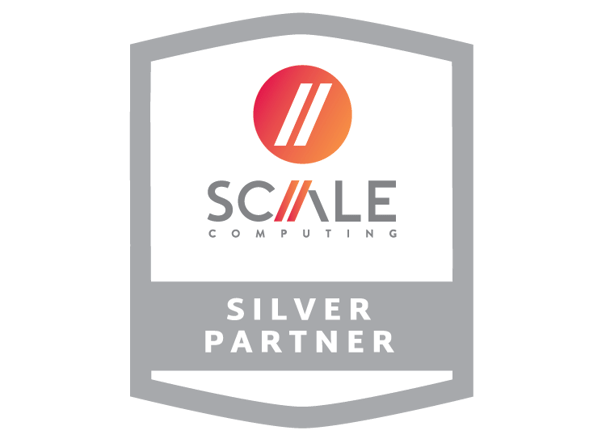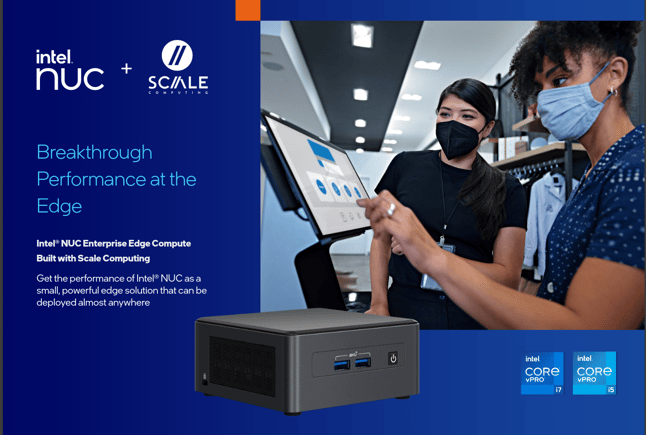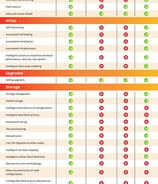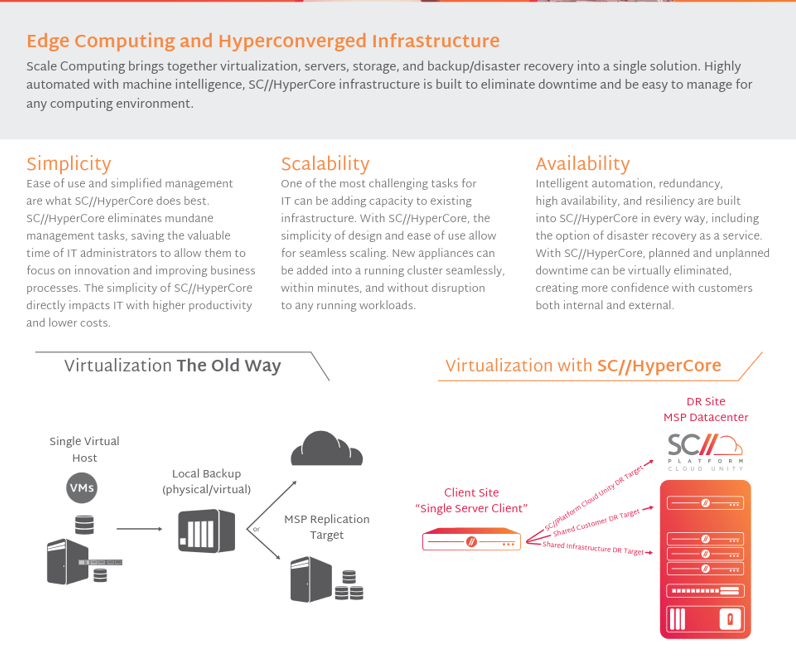SCALE COMPUTING
Providing hyperconverged solutions




Help Desk Support
Our dedicated help desk team offers reliable support to resolve technical issues promptly and efficiently.
Hyperconverged Solutions
We deliver cutting-edge hyperconverged nodes to enhance your infrastructure and streamline operations effectively.




FINANCES
Comparing the costs of VMware and Scale Computing over a 5-year lifecycle, and then contrasting a traditional data center with a scaled-up cluster, requires consideration of various factors. Here's a breakdown:
Cost Comparison Over a 5-Year Lifecycle:
VMware:
VMware's costs can be complex, involving licensing fees for vSphere, vCenter, and other components. These fees can vary significantly based on the number of CPUs, features required, and support levels.
Additionally, VMware environments often require separate investments in storage area networks (SANs) or network-attached storage (NAS), adding to the overall cost.
Ongoing maintenance, support, and potential upgrades also contribute to the total cost of ownership (TCO).
Since Broadcoms acquisition of VMWare, licensing costs have become very volatile, and generally have increased.
Scale Computing:
Scale Computing's HCI approach simplifies costs by integrating compute, storage, and virtualization into a single platform.
Their licensing model is generally more straightforward, often based on a per-node or per-core basis.
The integrated nature of HCI can reduce hardware costs and simplify management, leading to lower operational expenses.
Scale computing has very competitive pricing, especially for small to medium sized buisnesses, and edge computing.
Scale computing has published pricing, making it easier to predict costs.
Large Enterprise: Data Center vs. Scaled-Up Cluster:
Traditional Data Center (VMware-centric):
High upfront costs for hardware (servers, storage, networking), software (VMware licenses), and infrastructure (power, cooling, space).
Significant ongoing costs for maintenance, support, and IT staff.
Complexity in managing separate components, leading to potential inefficiencies.
Large amounts of power consumption.
Scaled-Up Cluster (Scale Computing-centric):
Lower upfront costs due to the integrated HCI approach.
Simplified management, reducing operational expenses and IT staff requirements.
Improved scalability and flexibility, allowing for easier expansion as needed.
Potential for reduced power consumption and footprint.
Because of the nature of scale computing, scaling up can be done in a much more granular way, allowing for right sizing of hardware.
Key Cost Considerations:
Licensing: VMware's licensing can be a significant cost driver, while Scale Computing offers a simpler and potentially more cost-effective model.
Hardware: HCI can reduce hardware costs by eliminating the need for separate storage arrays.
Operational Expenses: Simplified management and automation can lead to lower operational expenses.
Scalability: HCI can provide more flexible and cost-effective scalability.
Power and Cooling: Data centers have high power and cooling costs, that can be reduced by modern HCI solutions.
In conclusion, Scale Computing's HCI approach can offer significant cost advantages, especially for organizations seeking simplicity, scalability, and cost-effectiveness.
SECURITY
VMware Security:
Mature Security Features:
VMware has a long history and a mature security ecosystem. Products like vSphere offer a wide range of security features, including access control, encryption, and network security.
VMware also integrates with a vast array of third-party security solutions, providing comprehensive security capabilities.
Complexity and Configuration:
The complexity of VMware environments can also be a security challenge. Misconfigurations can create vulnerabilities.
Proper security requires in-depth knowledge and careful management.
Security Updates:
It is very important to keep all VMWare products up to date with the latest security patches. As with all software, vulnerabilities are found, and patched.
Scale Computing Security:
Simplified Security:
Scale Computing's HCI approach simplifies security by consolidating infrastructure and reducing the attack surface.
Built-in features like data redundancy and disaster recovery enhance security.
Focus on Edge Security:
Scale Computing's focus on edge computing means that security is a critical consideration. Their platform is designed to be secure in distributed environments.
Integrated Resilience:
Scale computing has integrated high availability, and disaster recovery. This allows for very fast recovery from failures, and attacks.
Ease of Management:
The simplicity of Scale Computing's platform can make it easier to maintain a secure environment, especially for organizations with limited IT resources.
Key Security Considerations:
Attack Surface:
HCI can reduce the attack surface by consolidating infrastructure.
Data Protection:
Both platforms offer data protection features, but the implementation and management differ.
Access Control:
Proper access control is essential for both platforms.
Patch Management:
Keeping both VMware and Scale Computing environments up to date with security patches is crucial.
Compliance:
Both platforms can be configured to meet various compliance requirements.
In summary:
VMware offers a very robust and feature-rich security ecosystem, but it requires careful configuration and management.
Scale Computing prioritizes simplicity and integrated security, making it a strong option for organizations seeking ease of use and edge security.
Ultimately, the best choice depends on the specific security requirements and resources of the organization.
COMPLEXITY
VMware's Established, Yet Complex, Model:
VMware has long been a leader in virtualization, offering powerful and versatile solutions. Their model often involves a layered approach, with separate components for compute, storage, and networking. While this provides flexibility, it can also lead to increased complexity in management and licensing.
VMware's products, like vSphere, are known for their robust feature sets, making them suitable for large, enterprise-level deployments. However, this depth of functionality can also translate to a steeper learning curve and higher costs.
Licensing is a key factor. VMware's licensing model can be intricate, with costs varying based on features, cores, and other factors. This can make budgeting and cost management challenging.
Scale Computing's Simplified, Hyperconverged Approach:
Scale Computing focuses on simplicity and ease of use with its HCI platform. Their approach integrates compute, storage, and virtualization into a single, unified system. This simplifies deployment, management, and scaling.
Scale Computing is particularly well-suited for edge computing and distributed environments, where simplicity and reliability are paramount. Their platform is designed to be easy to manage, even with limited IT resources.
A major differentiator is Scale Computing's focus on cost-effectiveness. Their simplified architecture and licensing model can result in significant cost savings compared to traditional VMware deployments. They are very focused on ease of use, and automation.
Key Comparative Points:
Complexity: VMware offers extensive features, but at the cost of complexity. Scale Computing prioritizes simplicity.
Cost: Scale Computing aims for cost-effectiveness, while VMware's licensing can be complex and expensive.
Scalability: Both platforms offer scalability, but Scale Computing's HCI approach simplifies the process, especially for distributed environments.
Target Audience: VMware is often favored by large enterprises with complex needs, while Scale Computing is popular with small to medium-sized businesses and organizations with edge computing requirements.
Support: Scale computing has been noted for very strong customer support.
In essence, VMware provides a powerful and flexible virtualization platform, while Scale Computing offers a simplified and cost-effective HCI solution. The best choice depends on the specific needs and priorities of the organization.
CONCLUSION
VMware:
A mature, feature-rich virtualization platform, ideal for large, complex enterprise environments.
Offers extensive security features but can be complex to manage.
Licensing and overall costs can be high and complex, especially after the Broadcom acquisition.
Scale Computing:
A hyperconverged infrastructure (HCI) solution focused on simplicity, cost-effectiveness, and edge computing.
Integrates compute, storage, and virtualization, reducing complexity and the attack surface.
Offers simplified security and management, making it suitable for organizations with limited IT resources.
Has very competitive pricing, and published pricing.
Strong support reputation.
In essence, VMware is powerful and versatile, while Scale Computing is streamlined and economical.
Breaking Circuits provided exceptional tech support, resolving our issues quickly and efficiently. Their hyperconverged nodes have significantly improved our operations. Highly recommend their services!
Edward Bradford

★★★★★



